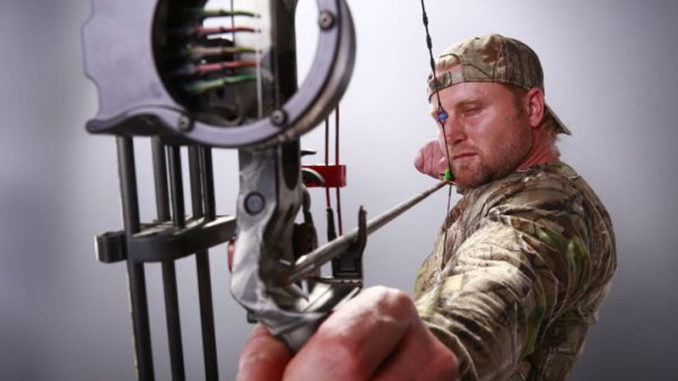
Ensure you’re set up for that opening-day shot
With bow season starting up in the coming weeks, it’s past time to shake the rust off and ensure you’re ready when that deer steps out at 30 yards on opening morning.
Even if you’ve been shooting on a regular basis, it’s a good idea to take a few minutes to tune the bow.
And Shawn Padgett of ArcheryTalk.com said it’s not all that difficult — in fact, he shares what he calls a “quick tune” in this Youtube video.
The first thing you need to do is create a target face with a large piece of white paper, placing a strip of black electrical tape in the center of the target.
“Now, take your arrow and put it on your bow. Kind of eyeball the height of your rest; make sure it’s pretty horizontal from your nocking point through your rest,” Padgett said.
The next step is to compare the string and the riser, and the string should be positioned roughly in the center of the riser.
Taking a shot
Now it’s time to take a shot with the bow.
Place your target face on the target block with the black line positioned horizontally, pace off 10 yards and shoot at the center of the black tape.
“Move your sight until you are dead in the middle of that black line,” Padgett said.
Once satisfied that you have the sight set correctly, move back to 20 yards and take a shot.
“Use the exact same pin. Shoot to the exact same spot in the line,” Padgett said. “By doing this, what you’re seeing is if your nocking point is at the right height.
“(With t)he speed of the bows today, you should not lose anything from 10 to 20 yards.”
If the impact points of the 10- and 20-yard shots are different, you need to adjust the nocking point.
For example, Padgett said if the impact point at 20 yards is a half inch lower than the 10-yard shot, the nock is a little high.
“That’s why your arrow hit a little bit low,” he explained.
So how do you fix this issue?
Padgett said nocking loops make it easy to adjust the point at which your arrow will be nocked.
“If you look at the serving on your string, you’ll notice it is done in one direction or the other … and you can take your nocking loop and take it one rotation up or down,” he said.
In the example above, where the 20-yard arrow hit lower than the 10-yard shot, the nocking loop should be turned so the serving screws down the string — effectively lowering the nocking point.
Then it’s time for another shot at the black line from 20 yards.
“… (Y)ou might need one rotation or you might need two rotations, but by doing this what you’re going to find is that you’re going to hit in the center of that line at 10 and 20 yards,” Padgett said. “What this has done is set your nocking point at the exact right spot.”
Center shot
Next, it’s time to work on what he called the “center shot.”
First, turn the target face 90 degrees, so the black line is vertical on the target block.
“Go back to 20 yards, and shoot at … that line,” he said. “Move your sight pin accordingly, left or right.”
Once you’re striking the line in the center, move back to 40 yards for your next shot.
“You can either use your 20-yard pin and aim at the top of the (paper) or move a(nother) pin up and make a 40-yard pin,” he said.
If your arrow strikes left or right of the black line, adjustments must be made.
“If you hit … 2 inches left, you know you have to move your pin just a touch to the right,” Padgett said. “Move it a little bit, make your next shot.
“What you’re trying to accomplish is (that at) 20 to 40 yards you want to be in this line.”
Once you’ve accomplished that, you can set up the rest of your pins.
Turn the target face 90 degrees so the line is again horizontal.
“You know your 20-yard pin is good, so move your 30-yard pin, stand at 30 yards and shoot at this horizontal line,” Padgett said. “Once you’re in there, move back to 40 yards, 50 yards and so on.”
That’s it. Your bow should be properly tuned.
“I think if you guys try this out, it’s going to make it a lot easier to tune your bow, you’re not going to spend countless hours in front of a paper tuner getting frustrated and mad,” Padgett said. “Give it a shot, and see if it doesn’t improve your shooting.”
Editor’s Note: This still doesn’t replace having your bow properly tuned from the start.


